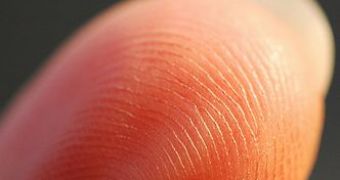Sara Alotaibi, a Masters degree owner in Web Technology at the University’s School of Electronics and Computer Science, at the University of Southampton, had a brilliant idea: developing a new service that would make it possible for users to have multiple online accounts, using a scan of their fingerprint instead of several passwords.
The service is called FingerID and in order to develop it, Ms Alotaibi analyzed the existing and proposed systems to replace the conventional form 'username and password' on the Web, and concluded that there was some serious work to be done.
After assessing these systems for security, accessibility and usability, she decided that the best replacement for a password would be fingerprint data.
So she started working on FingerID and turning it into a service that would allow multiple web accounts with the user's fingerprint.
The idea behind this system is that it asks for the user's fingerprint scan once, for registration purposes, and afterwards, the user can access several web accounts.
Every user will only register once, and later scans will verify the user in order to give access to web accounts.
The FingerID system has two main parts: web site and software (browser), AlphaGalileo reports.
Ms Alotaibi said that “the username/password authentication mechanism is no longer fit for purpose, so FingerID has come at a good time.
“We propose a cost-effective, convenient and secure authentication-solution for undertaking secure dealings over the Internet.
“It will allow Internet users to authenticate their identity in a hassle-free manner and go about their activities in a secure environment without the fear of loss of identity and money.”
“FingerID provides users with the facility to maintain multiple web accounts from a single source just using a fingerprint, and eliminates their concerns about having to remember multiple usernames and passwords,” added Ms Alotaibi.
She plans to develop her research further in her PhD and she could try other aspects of authentication like palm prints and face gestures.

 14 DAY TRIAL //
14 DAY TRIAL //